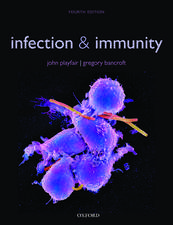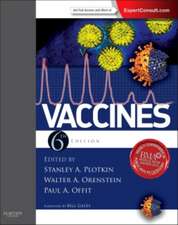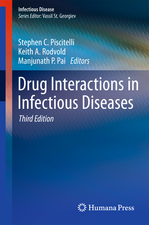Cytotoxic Cells: Recognition, Effector Function, Generation, and Methods
Autor SITKOVSKY, HENKARTen Limba Engleză Paperback – 22 mar 2012
Preț: 389.56 lei
Preț vechi: 410.07 lei
-5% Nou
Puncte Express: 584
Preț estimativ în valută:
74.55€ • 80.95$ • 62.62£
74.55€ • 80.95$ • 62.62£
Carte tipărită la comandă
Livrare economică 23 aprilie-07 mai
Preluare comenzi: 021 569.72.76
Specificații
ISBN-13: 9781468468168
ISBN-10: 1468468162
Pagini: 544
Ilustrații: XIV, 528 p.
Dimensiuni: 178 x 254 x 29 mm
Greutate: 0.93 kg
Ediția:Softcover reprint of the original 1st ed. 1993
Editura: Birkhäuser Boston
Colecția Birkhäuser
Locul publicării:Boston, MA, United States
ISBN-10: 1468468162
Pagini: 544
Ilustrații: XIV, 528 p.
Dimensiuni: 178 x 254 x 29 mm
Greutate: 0.93 kg
Ediția:Softcover reprint of the original 1st ed. 1993
Editura: Birkhäuser Boston
Colecția Birkhäuser
Locul publicării:Boston, MA, United States
Public țintă
ResearchCuprins
Section I: Introduction and Overview.- I Introductory Remarks.- 2 T-Cell-Mediated Cytotoxicity: A Historical Note.- 3 Overview of CTL-Target Adhesion and Other Critical Events in the Cytotoxic Mechanism.- Section II: Target Cell Recognition.- 4 ?? T-Cell Receptor Repertoires Among Cytotoxic and Helper T Lymphocytes.- 5 Class I MHC/Peptide/?2-Microglobulin Interactions: The Basis of Cytotoxic T-Cell Recognition.- 6 The Role of CD8-Class I Interactions in CTL Function.- 7 Interactions Between CD2 and T-Cell Receptor Isoforms in CTL Function.- 8 Triggering Structures on NK Cells.- 9 Targeted Cellular Cytotoxicity.- Section III: Generation of Cytotoxic Cells.- 10 Immunobiology and Molecular Characteristics of Peritoneal Exudate Cytotoxic T Lymphocytes (PEL), Their In Vivo IL-2 Dependent Blasts and IL-2 Independent Cytolytic Hybridomas.- 11 Regulatory Effects of Cytokines on the Generation of CTL and LAK Cells.- 12 IL-2-Independent Activation of LAK Cells by a Heterodimeric Cytokine, Interleukin-12.- 13 Immunobiology of ?2-Microglobulin-Deficient Mice.- Section IV: Molecular Mechanisms of Cellular Cytotoxicity.- 14 The Granule Exocytosis Model for Lymphocyte Cytotoxicity and Its Relevance to Target Cell DNA Breakdown.- 15 Subpopulations of Cytotoxic T Lymphocytes with Different Cytotoxic Mechanisms.- 16 Multiple Lytic Pathways in Cytototoxic T Lymphocytes.- 17 Properties of Cytotoxicity Mediated by CD4+, Perforin-Negative T-Lymphocyte Clones.- 18 Direct Contact of Cytotoxic T Lymphocyte Receptors with Target Cell Membrane Determinants Induces a Prelytic Rise of [Ca2+]1 in the Target That Triggers Disintegration.- 19 Target Cell Events Initiated by T-Cell Attack.- 20 Apoptosis and Cytotoxic T Lymphocytes.- 21 Molecular Mechanisms of Lymphocyte Cytotoxicity.- Section V:Granule Proteases.- 22 Subtractive and Differential Molecular Biology Approaches to Molecules Preferentially Expressed in Cytotoxic and Other T Cells.- 23 Structure and Possible Functions of Lymphocyte Granzymes.- 24 The Role of Granzyme A in Cytotoxic Lymphocyte-Mediated Lysis.- 25 The Granzyme A Gene: A Marker for Cytolytic Lymphocytes In Vivo.- 26 Molecular Analysis and Possible Pleiotropic Function(s) of the T Cell-Specific Serine Proteinase-1 (TSP-1).- 27 Serine Protease Control of Lymphocyte-Mediated Cytolysis.- Section VI: Alternative Mechanisms of Cytolysis.- 28 Possible Role of Extracellular ATP in Cell-Cell Interactions Leading to CTL-Mediated Cytotoxicity.- 29 Cell-Permeabilizing Properties of Extracellular ATP in Relation to Lymphocyte-Mediated Cytotoxicity.- 30 The Role of Free Fatty Acids in CTL-Target Cell Interactions.- Section VII: Biochemical and Immunopharmacological Manipulations of Cytotoxic Cells.- 31 Identification of Protein Kinases and Protein Phosphatases Involved in CTL Effector Functions. “ON” and “OFF” Signaling and Immunopharmacological Implications.- 32 Cytolytic Granules as Targets for Immunosuppressive Therapy: Selective Ablation of CTL by Leucyl-Leucine Methyl Ester.- Section VIII: Functions of Cytotoxic Cells in Vivo.- 33 Role of CD8+?? T Cells in Respiratory Infections Caused by Sendai Virus and Influenza Virus.- 34 CD4+ and CD8+ Cytolytic T Lymphocyte Recognition of Viral Antigens.- 35 Can CTL Control Virus Infections Without Cytolysis? The Prelytic Halt Hypothesis.- 36 Immunologic Control of Toxoplasma Gondii Infection by CD8+ Lymphocytes: A Model for Class I MHC- Restricted Recognition of Intracellular Parasites.- 37 Antigen-Specific Suppression of Antibody Responses by Class II MHC-Restricted CTL.- 38 TheImmunosenescence of Cytolytic T Lymphocytes (CTL): Reduction of Pore-Forming Protein and Granzymc Levels.- 39 Bone Marrow Graft Rejection as a Function of TNK Cells.- 40 Class I MHC Antigens and the Control of Virus Infections by NK Cells.- 41 Clinical Trials of Immunotherapy of Cancer Utilizing Cytotoxic Cells.- Section IX: Macrophage-Mediated Cytotoxicity.- 42 Macrophage-Mediated Cytotoxicity.- Section X: Methods.- 43 The 51Cr-Release Assay for CTL-Mediated Target Cell Lysis.- 44 DNA Fragmentation and Cytolysis Assayed by 3H-Thymidine.- 45 The JAM Test: An Assay of Cell Death.- 46 Target Cell Detachment Assay.- 47 Protocol for Assaying CTL Activity Against Toxoplasma gondii.- 48 Granule Exocytosis Assay of CTL Activation.- 49 Measurement of Cytolysin Hemolytic Activity.- 50 SPDP Crosslinking of Antibodies to Form Heteroconjugates Mediating Redirected Cytotoxicity.- 51 Derivatization of Cells with Antibody.- 52 Mixed Lymphocyte Culture for the Generation of Allospecific CTL.- 53 Generation of CD4+ and CD8+ Antiinfluenza CTL and Assay of In Vitro Cytotoxicity.- 54 Generation of Antigen-Specific M urine CTL Under Weakly Immunogenic Conditions.- 55 Commercial Liposomes and Electroporation Can Deliver Soluble Antigen for Class I Presentation in CTL Generation.- 56 Stimulation of CTLs on Antibody-Coated Plates.- 57 CTL Recognition of Purified MHC Antigens and Other Cell Surface Ligands.- 58 Use of Protease Inhibitors as Probes for Biological Functions: Conditions, Controls, and Caveats.- 59 The Murine T Cell-Specific Serine Proteinase-1: Cleavage Activity on Synthetic and Natural Substrates.- 60 Detection of Specific mRNAs by In Situ Hybridization.










